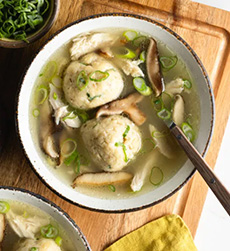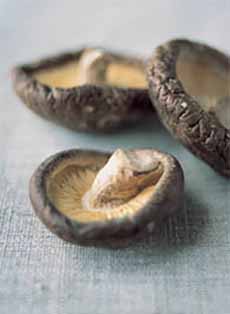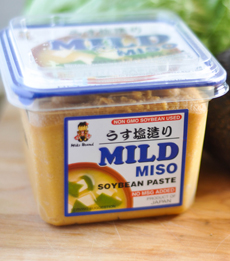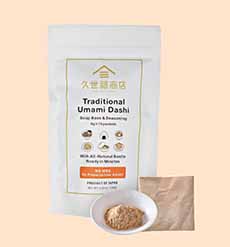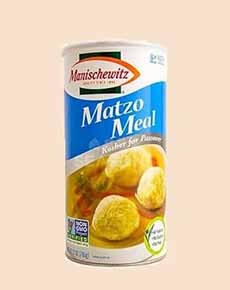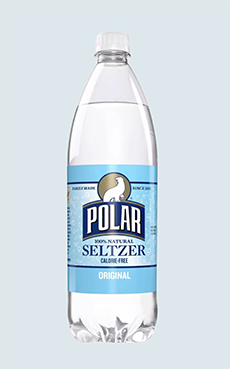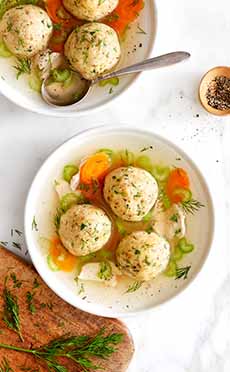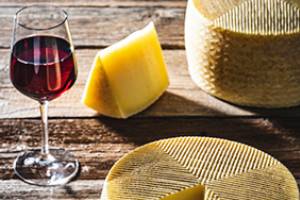Miso Matzoh Ball Soup Recipe: Jewish-Japanese Fusion Food
|
Classic Jewish matzoh ball soup is comfort food par excellence. This version, Jewish-Japanese fusion food, gives it a trending, umami-rich twist. The homemade chicken broth is flavored with earthy sautéed mushrooms, white miso paste, and dashi soup base. (Heads up: the soup base adds extra savoriness, but it’s not kosher. Don’t worry, though—if you omit it, the soup will still be delicious!) The matzo balls are also a bit different. They’re made in the traditional way, but with green onions and a hint of sesame oil for a subtle, nutty boost. (Editor’s note: We have long added minced fresh parsley to our matzoh balls. It’s a great enhancement).the perfect modern spin on traditional comfort food. Thanks to Gelson’s for the recipe. Click the link to find many more special recipes. The recipe follows. Also below: > The history of matzoh ball soup. Also: > More 21st-century updates to chicken soup and matzoh balls. The broth and chicken can be made a day in advance of making the matzoh balls. For The Soup 2. REMOVE the chicken from the broth with tongs and transfer to a cutting board. Strain the broth through a fine-mesh sieve and into a large bowl and set aside. Discard the aromatics and rinse the pot. 3. ADD the vegetable oil to the pot and heat over medium-high heat. Add the mushrooms and sauté until browned and fragrant, about 5 to 7 minutes. 4. RETURN the strained broth to the pot and bring it to a simmer. Whisk in the miso paste and optional soup base. 5. REMOVE the chicken chicken meat from the bones when it’s cool enough to handle, using your fingers or two forks. Shred it into bite-sized pieces. Add the chicken and white parts of the scallions to the pot, stirring occasionally, until heated through, 3 to 5 minutes. Season with salt to taste. 2. MAKE the matzo balls. In a large bowl, mix together the eggs, vegetable oil, sesame oil, matzo meal, seltzer, salt, and half of the scallions with a fork. Cover and refrigerate for 30 minutes. 3. BRING a large pot of generously salted water to a boil over high heat. Reduce the heat to medium-low and maintain the water at a simmer. Using your hands, gently press a small amount of matzo ball dough* into a 1-inch ball. Drop the matzo ball into simmering water. Repeat with the remaining dough. 4. COVER the pot and gently simmer the matzo balls until they are tender and puffy, about 40 minutes. Drain the matzo balls, return them to the pot, and keep them covered in a warm place until you’re ready to use them. 5. DIVIDE the matzo balls among 8 bowls and ladle the soup on top. Garnish with the remaining green onions. Leftover matzo ball soup can be stored in an airtight container in the refrigerator for up to 4 days. There are many examples of classic foods updated for foodie audiences that the original while adding excitement. Here are some ways to update Grandma’s matzoh ball soup. Matzoh Ball Mix-Ins Add to your dough/batter: Miso is a traditional Japanese seasoning made by fermenting soybeans with salt and a starter called koji, a kind of starter culture. The result is a thick umami paste: deeply savory and salty. It can earthy and pungent or slightly sweet depending on the variety. Because it’s fermented, miso has probiotic benefits (just don’t boil it—heat can kill the good bacteria). Fermentation in miso increases the concentration of antioxidants, which help protect cells from damage caused by free radicals. However, the single tablespoon of miso paste in that one cup of soup contains 600–800 mg of sodium. Creative cooks and bakers have discovered the joy of miso in: Before there was matzoh meal, with which matzoh balls are made, there had to be matzoh. According to Jewish tradition, the Exodus from Egypt occurred approximately in the 13th century B.C.E. (around 1250-1200 B.C.E.), though scholars debate the exact timing. The story that is told is, when the Israelites were finally permitted to leave Egypt after a series of plagues sent by God to release them, they had to leave in such haste that they couldn’t wait for their bread to rise. Instead, they baked unleavened bread—matzoh—for their journey. (Here’s more history of matzoh.) This historical event is commemorated during the Jewish holiday of Passover. The development of matzoh ball soup came much later, primarily during the medieval (500-1500 C.E.) and early modern periods (1500-1789 C.E.), in Ashkenazi Jewish communities in Eastern and Central Europe. The direct predecessor of matzoh balls was likely a Bavarian soup called knödel (KNAY-dul). Observing the dietary laws of Passover, ingredients, they created a version using matzoh meal instead of bread crumbs. These dumplings were called kneidlach (KNAY-dul-uch), and were served in chicken soup. When Eastern European Jews immigrated to America in large numbers in the late 19th and early 20th centuries, kneidlach became known in English as matzoh balls. In 1930, Manischewitz introduced a packaged matzoh ball mix, making the dish more consistent. It helped to standardize matzoh balls in American Jewish cuisine, and introduced the dish to a wider audience. Matzoh ball soup, an integral component of Passover fare, came to be served year-round as comfort food. It earned the nickname “Jewish penicillin” for its reputation as a remedy for colds and other ailments†. Today, matzoh ball soup appears in countless variations. If you like trying new things, don’t wait until the holidays to try some of the ideas above. |
|
|
|
________________ *Talmudic question: Is the raw matzoh ball mix dough or batter? We say dough, because it’s firm enough to be rolled into balls, like some cookie doughs. Most sources we’ve seen call it batter, which is a liquid that can be poured—like pancake batter. †Chicken soup’s health benefits: Research has found that chicken soup may have mild anti-inflammatory properties that can help relieve cold symptoms. A 2000 study by Dr. Stephen Rennard at the University of Nebraska Medical Center showed that chicken soup inhibited the movement of neutrophils (white blood cells that cause inflammation), potentially reducing upper respiratory symptoms. As a warm broth, it can also help with nasal congestion by increasing mucus flow and provide hydration. It is also easy to consume and digest. ††Kuze Fuku Traditional Umami Dashi Soup Base & Seasoning (photo #7) is a brand of powdered dashi used as a soup broth, or as a seasoning in other dishes. Similar to bouillon powder or granulated bouillon, it’s a concentrated, dehydrated form of broth or stock, designed for easy dissolving in water. It delivers a rich, savory flavor. You can find it at Asian markets and online. ‡Scallions and green onions are the same thing: a small bulb with a longer white shaft that is green at the top. Spring onions are common yellow onions that farmers pull from the field in spring to thin the rows. If left in the ground, grow into a common onion. CHECK OUT WHAT’S HAPPENING ON OUR HOME PAGE, THENIBBLE.COM. |
||
